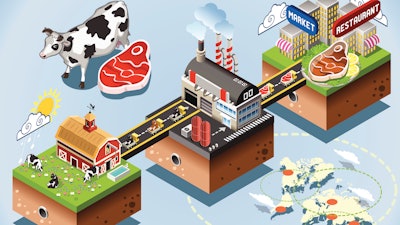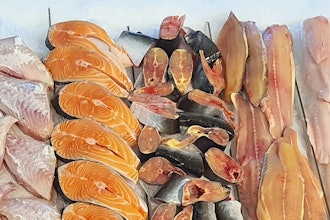
From safety concerns to ethical issues, food traceability is a growing priority up and down the supply chain. How can you ensure food safety if you have no visibility of where the ingredients originated? Or that they were not produced by forced labor? Or that they do not contain illegally or unethically sourced animal products? What assurances can you pass to the end consumer?
All these issues can have legal and brand-damaging consequences. In addition, governments are starting to require greater supply chain transparency from Food and Beverage (F&B) companies. In the U.S., for example, following the FDA Food Safety Modernization Act (FSMA) passed in 2011, the FDA has been exploring ways to extend traceability more deeply into the food supply chain to make it easier to track movement through the supply chain in order to quickly contain food-borne illness outbreaks or contamination. These efforts will likely increase traceability requirements in the near future, holding F&B businesses accountable.
The right technology can provide end-to-end transparency for food and beverage companies, allowing supply chain visibility that extends to every tier in the supply chain. This makes it much easier for businesses to verify the chain of custody, from farm to consumer.
What is Traceability?
Traceability involves processes used to ensure that foods and beverages are monitored throughout production, processing, and distribution. With effective traceability, an F&B company can identify where the ingredients in its products are at any point in the supply chain. This allows stakeholders to verify the product's safety and compliance, as well as evaluate operating processes and supply chain efficiencies.
Why Is Traceability Important for F&B Companies?
According to the Food and Beverages Global Market Report 2020-2030, the global food and beverage market is projected to expand at a compound annual growth rate of 7% between 2021 and 2023. The market could be worth more than $7.6 trillion by 2023. To capitalize on this expanding opportunity, F&B companies must track their supply chain processes. This allows them to maintain efficient operations that ensure high-quality products are consistently produced and delivered. Traceability also allows businesses to make better decisions that align with company goals that are tied to Environmental, Social and Corporate Governance (ESG).
In addition, food safety remains a key part of F&B companies' everyday operations. The Centers for Disease Control and Prevention report there is a very low risk of contracting COVID-19 from food and packaging or treated drinking water. Regardless, safety is a top priority for F&B businesses operating during the pandemic. And there are still many food-borne health risks that need to be contained. Without proper precautions in place, businesses are prone to errors that could compromise the safety of their products.
Adding to these pressures, governments are enforcing compliance requirements through the US Customs and Border Protection infrastructure. The U.S. government was initially focused on apparel and fashion brands importing cotton products with a nexus to forced labor in Xinjiang, China, but now food and beverage and other industries are now in the line of fire. On January 13, 2021 the US Customs and Border Protection expanded the Withhold Release Order (WRO) that originally detained all shipments containing cotton and cotton products originating from the Xinjiang Uyghur Autonomous Region (XUAR) to include tomato products.
In the near term, it is up to members of the food and beverage supply chain — regardless of size, and including growers, processors, distributors and retailers — to implement technology that provides a ‘digital thread’ demonstrating that every supplier in their complex, global network is free of forced labor.
The digital thread compiles and organizes a chronological and verifiable chain of custody for every tier of the supply chain. Transactions are validated at every tier, matching financial documents used in each transaction. All these documents are recorded and presented in a certificate of compliance that accompanies import paperwork.
The Bottom Line on Traceability Technology in the Food and Beverage Industry
Food and beverage companies can use traceability to drive supply chain enhancements, reduce risk, maintain brand integrity and capitalize on market opportunities. The technology is constantly evolving and will continue to improve, and can help expand operations, comply with food safety and sourcing regulations, and satisfy customer requests.
 Burstein
Burstein























